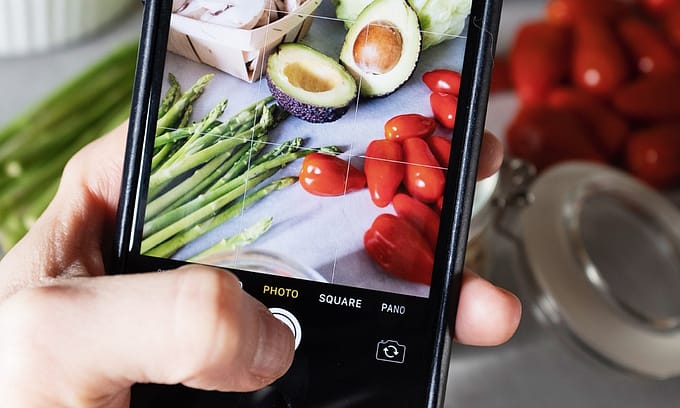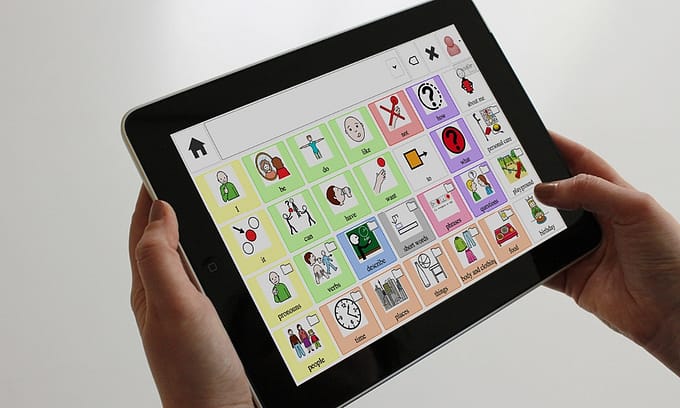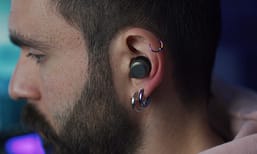Resources
5 Apps for People with Disabilities

As of 2022, there are over 61 million adults in the United States living with a disability, or around one in every four people, and software on the market has to reflect them too. From the way you design your app to the way that your app works, there’s different paths you can take to make sure that tech is, actually, for everyone.
It takes some thinking.
Apps are mostly designed for portable devices: cellphones, tablets. You have to contend with smaller screens, which are already a challenge, and for the fact that some hardware will struggle to run the software as intended. Maybe the sound isn’t high enough, or the quality of the screen isn’t good enough, to show your app clearly. Maybe whatever product is running it is a couple of generations older than the latest edition, and the updates you’ve implemented just don’t show up.
Maybe it just doesn’t work, and you can’t figure out why (a pro tip: check for a missing bracket. It’s always a missing bracket, except for when it’s a double space.)
When you’re designing for people with disabilities, these tiny niggling issues become a much bigger conversation about usability – and the core tenet of any software is usability.
Here are five apps that keep usability right at the forefront. They’re designed specifically for people with disabilities to answer problems they might run into in their day to day lives.
That’s what tech is all about.

1. Petralex
With both a free version and a premium version available, Petralex is an app designed to work with a wide range of headsets and devices for people with first and second hearing loss; it’s not a medical-grade hearing aid, but it can amplify sound so that people with hearing loss can hear even quieter sounds without issue. It works on Android and iOS, and features multiple sound ‘profiles’ dependant on where the user is going.
For example, to the cinema, opera, or theatre.
The app itself is designed to be easy to use: just download, go through the hearing test and the audiogram, and Petralex will finetune sound to play at a range that’s comfortable and audible for you.
2. Be My Eyes
This app made rounds on the internet a while back, but it’s still worth mentioning again: it’s a seeing-eye app that asks for sighted people around the world to volunteer to help out people with sight disabilities. It’s available in over 150 countries, in over 180 languages, and has been used by multiple big corporations including Microsoft, Google, and Spotify, to create a more inclusive working environment.
The way it works is incredibly simple: if someone needs help distinguishing between colours, finding a particular product, or making out small text or numbers, they send out a request. A sighted volunteer who speaks the same language responds to their request, and over a live video-call, they help with small things such as picking out the right brand at the grocery store, or reading expiry dates off of small products or finding misplaced items.
A key component of BeMyEyes is the emphasis on letting people with sight impairment live their lives as independently as possible, and they’re constantly updating the app with new languages and features to make it accessible to everyone.

3. Access Now
There are some places that are simply not accessible for people with disabilities, and it’s usually after you go there that you find out you can’t get in. From restaurants to tourist attractions, accessibility is built on such a spectrum that figuring out which places are likely to be easy to get into is a challenge best left to those people who like to hike up Mount Shasta before 6AM.
Access Now changes that. It’s a community-curated app that tracks, lists, and rates places on whether or not they’re accessible, and how accessible they are: can you get in using a patio? Can you get in using a back entrance?
For people who struggle to plan trips knowing that there’s a chance that the trip will end at the door, Access Now makes it easier to find locations to go where that isn’t a concern. And it’s completely free, for both iOS and Android.
4. CoughDrop
Some people struggle to make others understand what they’re saying, and it can get lonely having to rely on entirely remote communication. CoughDrop is an open-source app where the goal is to let people talk – no matter the topic. Working with specialists, CoughDrop offers a range of templates for people who are new to the world of augmented communication, and provides resources for parents, siblings, and caregivers to help ease themselves, and the speech impaired, into using CoughDrop for every day. It also comes with a 100% offline mode, where the user’s boards and logs are stored on the device to allow them to communicate even when the signal isn’t as strong.
There’s also the option to learn from others, using their board and their way of communicating to start off until they find their own.
The app also allows you to remain in control of your own data as – unfortunately – some AAC tech is built on proprietary software, and it’s hard to be able to tell how secure they are.
5. NotNav
A GPS navigation system for blind and visually-impaired people, NotNav has turn-by-turn directions and it keeps you in constant loop about what’s going on around you. No matter if you need to cross a road or you want to know what address you’re on, NotNav has a running commentary on where you’re going, where you are, and how far away you are from your destination.
It’s simple, free, and links up with Google Maps to provide the user with accurate information and no-stress location data.

Giving back independence
A core tenet of technology is that it’s supposed to make your life easier, and we’re living in the right time to make that happen. From smart networks and smart homes to apps that can be your eyes, we’re in a position to make tech that answers some of the problems in our lives that we didn’t even realise had answers.
If you’re interested in developing an app that answers a problem, or you have a cool idea for a solution that you don’t know how to programme, drop us a line.
We’re always on board for projects that help.